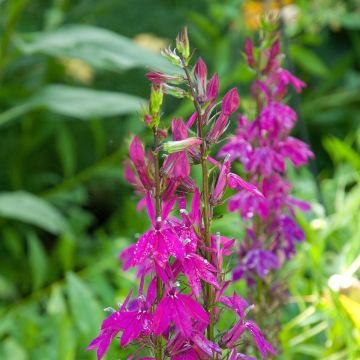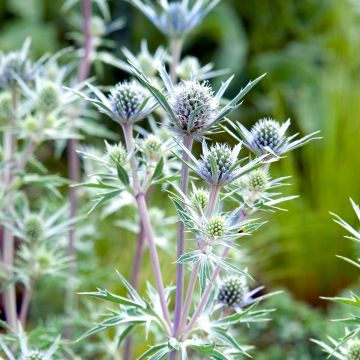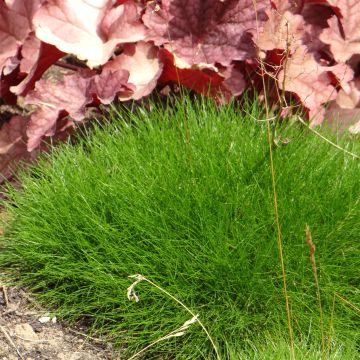

Typha minima


Typha minima


Typha minima
Typha minima
Typha minima
Massette naine
This item cannot be shipped to the selected country
Delivery charge from €5.90
More information
Schedule delivery date,
and select date in basket
This plant carries a 12 months recovery warranty
More information
We guarantee the quality of our plants for a full growing cycle, and will replace at our expense any plant that fails to recover under normal climatic and planting conditions.
From €5.90 for pickup delivery and €6.90 for home delivery
Express home delivery from €8.90.
Does this plant fit my garden?
Set up your Plantfit profile →
Description
The Typha minima is commonly known as Dwarf Cattail due to the shape of its female floral spikes, which turn brown when ripe. It is a hardy semi-aquatic plant that is small in size, both decorative and useful for its filtering properties, ideally suited for small ponds in the garden or on the terrace. It forms an upright clump with very thin linear leaves of a glaucous green colour, blooms in late spring, and its spikes remain decorative until winter.
The Typha minima belongs to the family of cattails; it is a close relative of the Typha latifolia or broadleaf cattail, which is widely used in phytoremediation. The Typha minima, native to the Eurasian continental wetlands, is a non-invasive species that has become rare in the wild. It is a perennial plant with a rhizome, which grows spontaneously on the banks of slow-flowing watercourses, ponds, and marshes, generally under 5 to 20 cm (2 to 8in) of water. The above-ground vegetation is deciduous, emerging from the ground in spring. This species generally measures 60 cm (24in) in all directions. The vegetation consists of stiff, upright stems called stipes, with linear and narrow leaves of a beautiful bluish-green colour. Each leaf measures about 30 cm (12in) long and 1 to 3 mm (0in) wide. The Typha minima blooms in May-June. Each plant bears both male flower heads with yellow stamens, separate from the female flower heads with green pistils. The decorative female flower heads are brown and elongated ovoid in shape, measuring 2 to 5 cm (1 to 2in). The wind carries out pollination.
The Dwarf Cattail can be planted at the edge of natural or artificial ponds (with liners, containers, tubs, large basins, etc.) in a basket filled with special aquatic plant soil. In the case of a small pond, a basin, or a natural stream, dig a hole in the mud, burying the rhizome at the right depth. It can be paired with a Farfugium, a Houttunya Chameleon, or a riverside anemone. This plant helps clarify and purify the water while providing a refuge for native fauna. And its unique flowers are highly appreciated in dried bouquets.
Report an error about the product description
Typha minima in pictures




Flowering
Foliage
Plant habit
Botanical data
Typha
minima
Typhaceae
Massette naine
Western Europe
Other Typha - Cattails
Planting and care
The Typha minima is planted from March-April to September in full sun or possibly in partial shade in warm regions with the rhizome submerged under 0 to 20 cm (0 to 8in) of water. For an artificial pond, use a perforated basket filled with special aquatic plant soil or heavy garden soil enriched with compost, possibly covered with gravel. Do not use regular soil; this substrate is too light and quickly disperses in the water. In a natural pond (without a liner or hard wall) or a small pond, plant directly in the mud under 15-20 cm (6-8in) of water. Allow for 3 plants per square metre.
Planting period
Intended location
Care
This item has not been reviewed yet - be the first to leave a review about it.
Summer flowering perennials
Haven't found what you were looking for?
Hardiness is the lowest winter temperature a plant can endure without suffering serious damage or even dying. However, hardiness is affected by location (a sheltered area, such as a patio), protection (winter cover) and soil type (hardiness is improved by well-drained soil).

Photo Sharing Terms & Conditions
In order to encourage gardeners to interact and share their experiences, Promesse de fleurs offers various media enabling content to be uploaded onto its Site - in particular via the ‘Photo sharing’ module.
The User agrees to refrain from:
- Posting any content that is illegal, prejudicial, insulting, racist, inciteful to hatred, revisionist, contrary to public decency, that infringes on privacy or on the privacy rights of third parties, in particular the publicity rights of persons and goods, intellectual property rights, or the right to privacy.
- Submitting content on behalf of a third party;
- Impersonate the identity of a third party and/or publish any personal information about a third party;
In general, the User undertakes to refrain from any unethical behaviour.
All Content (in particular text, comments, files, images, photos, videos, creative works, etc.), which may be subject to property or intellectual property rights, image or other private rights, shall remain the property of the User, subject to the limited rights granted by the terms of the licence granted by Promesse de fleurs as stated below. Users are at liberty to publish or not to publish such Content on the Site, notably via the ‘Photo Sharing’ facility, and accept that this Content shall be made public and freely accessible, notably on the Internet.
Users further acknowledge, undertake to have ,and guarantee that they hold all necessary rights and permissions to publish such material on the Site, in particular with regard to the legislation in force pertaining to any privacy, property, intellectual property, image, or contractual rights, or rights of any other nature. By publishing such Content on the Site, Users acknowledge accepting full liability as publishers of the Content within the meaning of the law, and grant Promesse de fleurs, free of charge, an inclusive, worldwide licence for the said Content for the entire duration of its publication, including all reproduction, representation, up/downloading, displaying, performing, transmission, and storage rights.
Users also grant permission for their name to be linked to the Content and accept that this link may not always be made available.
By engaging in posting material, Users consent to their Content becoming automatically accessible on the Internet, in particular on other sites and/or blogs and/or web pages of the Promesse de fleurs site, including in particular social pages and the Promesse de fleurs catalogue.
Users may secure the removal of entrusted content free of charge by issuing a simple request via our contact form.
The flowering period indicated on our website applies to countries and regions located in USDA zone 8 (France, the United Kingdom, Ireland, the Netherlands, etc.)
It will vary according to where you live:
- In zones 9 to 10 (Italy, Spain, Greece, etc.), flowering will occur about 2 to 4 weeks earlier.
- In zones 6 to 7 (Germany, Poland, Slovenia, and lower mountainous regions), flowering will be delayed by 2 to 3 weeks.
- In zone 5 (Central Europe, Scandinavia), blooming will be delayed by 3 to 5 weeks.
In temperate climates, pruning of spring-flowering shrubs (forsythia, spireas, etc.) should be done just after flowering.
Pruning of summer-flowering shrubs (Indian Lilac, Perovskia, etc.) can be done in winter or spring.
In cold regions as well as with frost-sensitive plants, avoid pruning too early when severe frosts may still occur.
The planting period indicated on our website applies to countries and regions located in USDA zone 8 (France, United Kingdom, Ireland, Netherlands).
It will vary according to where you live:
- In Mediterranean zones (Marseille, Madrid, Milan, etc.), autumn and winter are the best planting periods.
- In continental zones (Strasbourg, Munich, Vienna, etc.), delay planting by 2 to 3 weeks in spring and bring it forward by 2 to 4 weeks in autumn.
- In mountainous regions (the Alps, Pyrenees, Carpathians, etc.), it is best to plant in late spring (May-June) or late summer (August-September).
The harvesting period indicated on our website applies to countries and regions in USDA zone 8 (France, England, Ireland, the Netherlands).
In colder areas (Scandinavia, Poland, Austria...) fruit and vegetable harvests are likely to be delayed by 3-4 weeks.
In warmer areas (Italy, Spain, Greece, etc.), harvesting will probably take place earlier, depending on weather conditions.
The sowing periods indicated on our website apply to countries and regions within USDA Zone 8 (France, UK, Ireland, Netherlands).
In colder areas (Scandinavia, Poland, Austria...), delay any outdoor sowing by 3-4 weeks, or sow under glass.
In warmer climes (Italy, Spain, Greece, etc.), bring outdoor sowing forward by a few weeks.
















































